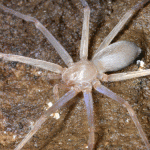
The Americas will collide with Asia and Europe in the Arctic, forming Amasia. Image: Shutterstock
All of Earth’s current continents will form Amasia, a single landmass, in 50 to 200 million years time.
Scientists have assumed the next supercontinent would either form in the same location as Pangaea, on the Equator over West Africa’s current location, or in the middle of the Pacific Ocean. But a new model of continental movement, published in Nature, suggests that it will form in the Arctic.
Ross Mitchell from Yale University, US, and his colleagues analysed the magnetism of ancient rocks to determine their locations on the globe over time and measured how the mantle moves the continents. They discovered that Amasia should form 90 degrees away from Pangaea.
“First you would fuse the Americas together, then those would mutually migrate northward leading to collision with Europe and Asia more or less at the present day North Pole,” Mitchell said. “Australia would continue with northward motion and snuggle up next to India.”
The scientists suspect the model could be part of a pattern because Pangaea formed 90 degrees to the previous supercontinent, Rodinia, which formed 1.1 billion years ago. Rodinia also formed 90 degrees from the previous supercontinent, Nuna, which existed 2 billion years ago.
The model has been dubbed orthoversion, as opposed to extroversion, where the new supercontinent still forms on the equator but on the other side of the world, or introversion, where it would form in the same place as Pangaea.
Orthoversion [watch video] could help geologists explain the movement of the past supercontinents, which were known to have a variety of configurations. “We weren’t quite sure whether there was method in the madness as you went from one to the other,” said geologist Peter Cawood, from St Andrews University in the UK.
Other past supercontinents include Gondwana (300 million-30 million years before present), Laurasia (300 million- 60 million years before present), Kenorland (2.7 billion years before present) and Ur (3 billion years before present). Ur is the earliest known landmass and, despite its small size, would have been a supercontinent in its time.
Source: Nature






